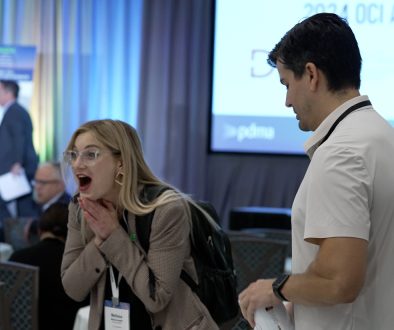ASAE Leadership Retreat Summary: Key Learnings on Member Engagement
This year’s American Society of Association Executives (ASAE) Leadership Retreat focused on methods for engaging members deeper into the professional community. We discussed “the power of purpose” as a compelling way to communicate why a professional should join and engage in an association. Association membership and engagement promotions should have as their underpinning a strong “why” message related to the individual’s ability to contribute to the greater cause being championed by the profession. This connects the individual’s personal mission for having chosen this profession for him/herself to the mission of the organization and its ability to serve as a vehicle for personal/professional fulfillment. If your association has a strong cause-related mission, you should focus on the need for each professional to commit to “advance our profession’s impact on [insert important societal challenge that the profession aims to address].” Associations must go deeper than this as well. A cogent message needs to be accompanied with examples of how your association manifests this message throughout its activities and member benefits. For example, frame the annual conference as a forum to bring together the most influential, innovative, and successful minds in the profession to shape its future. Articulate how participating in part of an online learning series will empower an individual with a clear understanding of the issues impacting practices in the profession and tools to address them. Describe how participants in the online discussion group lead the conversation about topics shaping the next stage/future of the industry and accompany this with testimonials.
The “Staff/Volunteer Dyad”
A strong relationship between staff and association leaders is critical to the success of a member engagement plan. A key component to this relationship is clarity of roles. Associations should have written chairperson position descriptions that include delineation of what the chair/committee is responsible for and what s/he can count on staff to provide (staff will… volunteer will…). Staff need to entrust areas of industry subject matter expertise to the association leaders and association leaders must respect the specialized knowledge, expertise and talent of the staff. Having someone “from the profession” in a staff position comes with positives and negatives. It can be a faster, more dependable source for content and industry perspective but there must be an expectation that the individual has significant time dedicated to garnering feedback from industry leaders and is not the sole source for content ideas, insights and guidance.
A recommendation toward achieving more overt and intentional attention to member engagement on an ongoing basis was to change the “Nominating” committee to the “HR Committee” responsible for identifying resource needs and the recruitment, engagement and assessment of all unpaid human resources to address those needs. The HR Committee is complemented by a “Council of Future Practices” that reviews industry data through the lens of the association. The Council of Future Practices provides a report to the board of directors based on industry data and their individual/combined experience. This report serves as a forecasting guide to portend the impact that trends are expected to have on the profession and what the association should do to address this. Once the board determines the action the association should take and whether to resource with staff or volunteers, the HR Committee begins its work anew.
Assessment
Measuring volunteer performance is the best way to optimize a volunteer-dependent system. That being said, ASAE leadership agreed that insufficient metrics exist for tracking volunteer performance/engagement. A model based on HR best practices would make sense — but none of the association leaders engaged in the discussion had a working model to share.
Rather than attempting to tackle the problem at once, it was recommended that associations start with a “Simple Assessment” solution:
- Have chairperson rank each volunteer’s performance on a scale of 1-3
- Have staff liaison rank each volunteer’s performance on a scale of 1-3
- Average the two and give feedback to each volunteer (most in writing; conversation where necessary)
Six Drivers of a Quality Volunteer Experience:
- Quality of staff coordinating their activity
- Receptivity of staff to give their input consideration
- Quality of orientation/introduction
- Quality of the volunteer leadership
- Ability to debate/discuss issues
- Time and timing
Orientation Questions
- Why are you choosing to engage further?
- What gifts do you have to offer to the organization?
- What do you want to gain through further engagement?
- What don’t you want to do as you get more involved in the organization?
4 levels of volunteerism (example from ISACA):
- Micro: one-time tasks
- Short-term/limited: e.g. support for an event or publication
- Annual commitment: serve on the XYZ Committee
- International/Local Governance
Below is an example Volunteer Engagement Model that was shared from R.A.P.S. using the Higher Logic online community tool:




